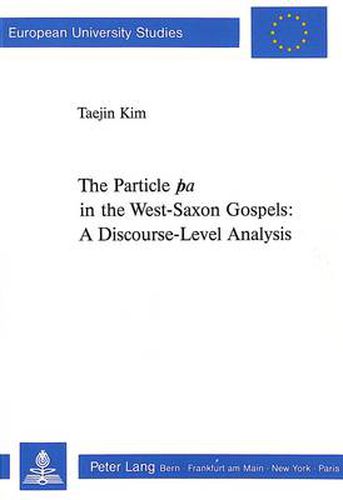Readings Newsletter
Become a Readings Member to make your shopping experience even easier.
Sign in or sign up for free!
You’re not far away from qualifying for FREE standard shipping within Australia
You’ve qualified for FREE standard shipping within Australia
The cart is loading…






The purpose of this study is to determine the function of the particle a in the West-Saxon Gospels. In order to test the often-articulated view that a is a foregrounding marker, the syntactic categories of the primary topics in clauses containing a are investigated. If a passage is foregrounded, its primary topic must have high topicality. However, the primary topics of the sentence-initial a-clauses have low topicality. A search for other features of foregrounding in the data resulted in similar negative results. This leads the author to conclude that a is an indicator of multifunctional discontinuity, signaling a shift of topic, scene, listener, content, deviation of time-line, or a combination of any of these. The instances which do not fall in these categories are treated as signaling action/thematic discontinuity inherently syntacticized in the form of parataxis. This book will be of special interest to scholars working in the fields of discourse analysis and Old English syntax.
$9.00 standard shipping within Australia
FREE standard shipping within Australia for orders over $100.00
Express & International shipping calculated at checkout
The purpose of this study is to determine the function of the particle a in the West-Saxon Gospels. In order to test the often-articulated view that a is a foregrounding marker, the syntactic categories of the primary topics in clauses containing a are investigated. If a passage is foregrounded, its primary topic must have high topicality. However, the primary topics of the sentence-initial a-clauses have low topicality. A search for other features of foregrounding in the data resulted in similar negative results. This leads the author to conclude that a is an indicator of multifunctional discontinuity, signaling a shift of topic, scene, listener, content, deviation of time-line, or a combination of any of these. The instances which do not fall in these categories are treated as signaling action/thematic discontinuity inherently syntacticized in the form of parataxis. This book will be of special interest to scholars working in the fields of discourse analysis and Old English syntax.